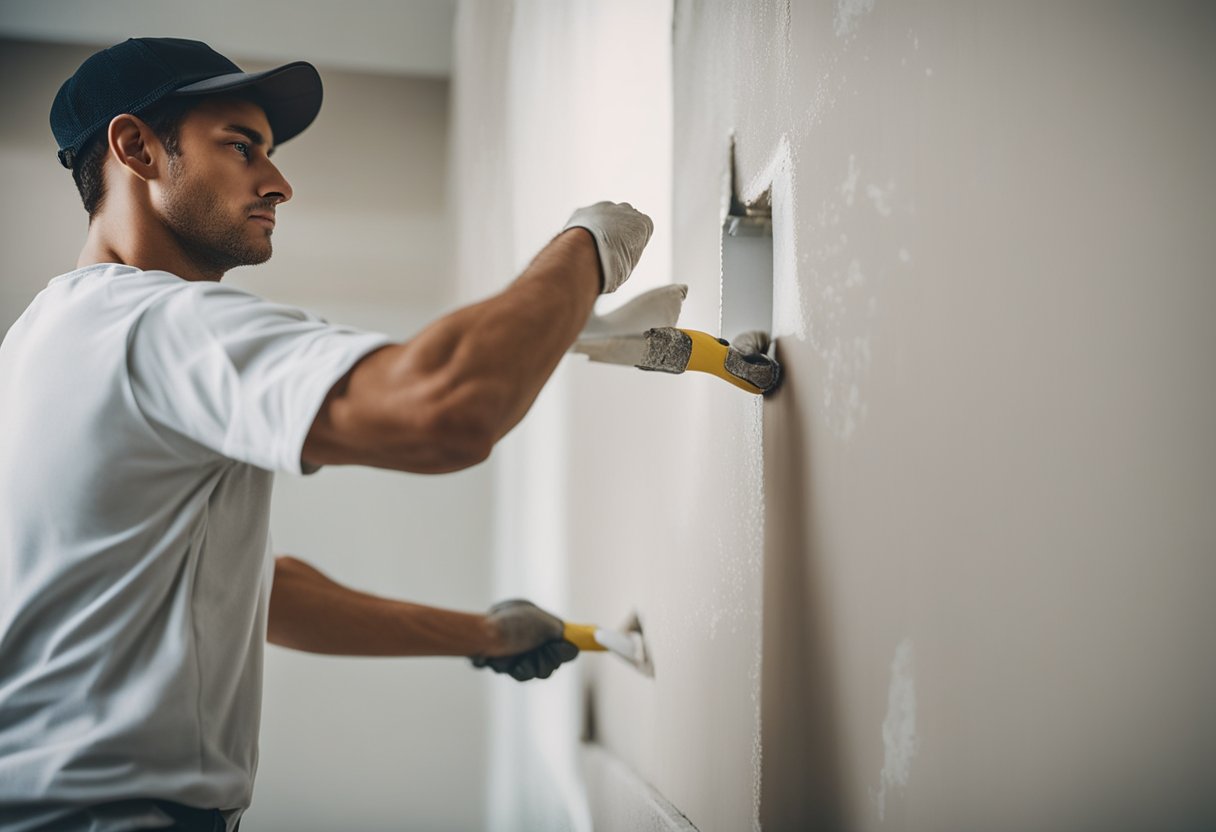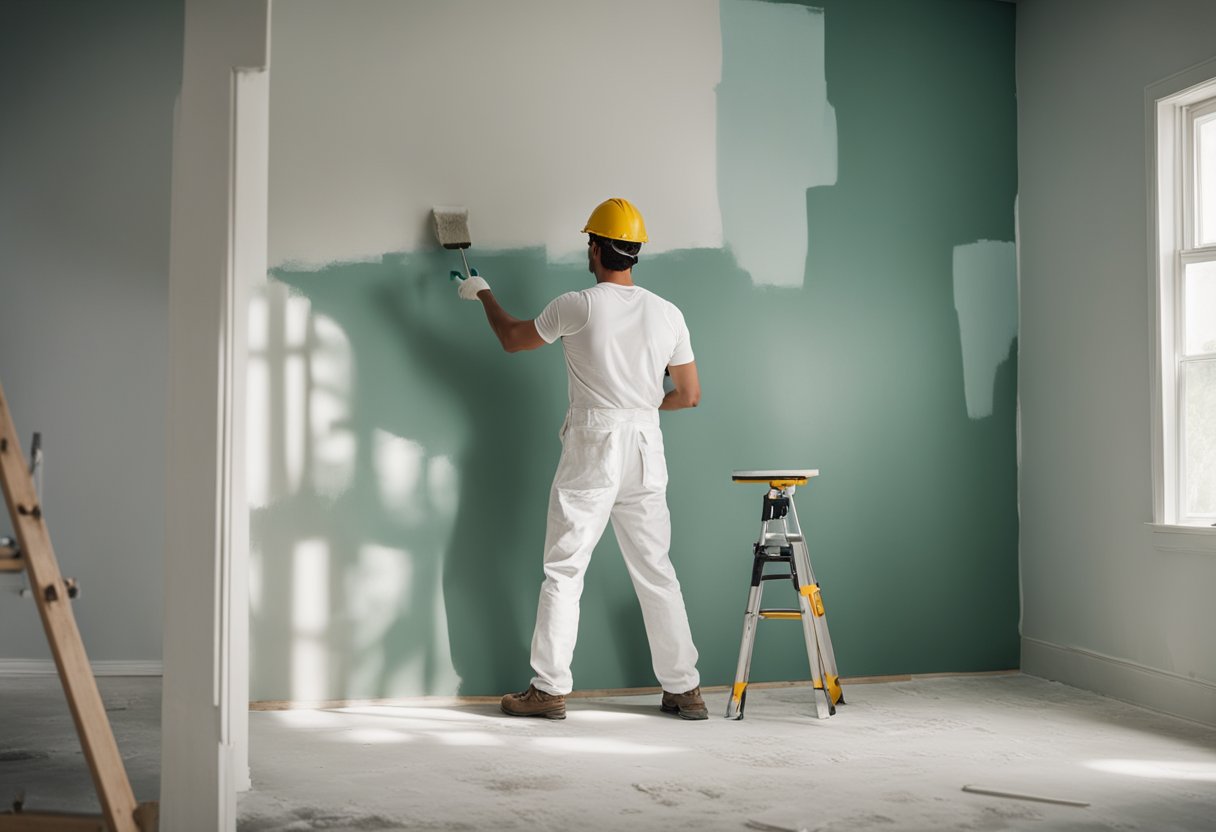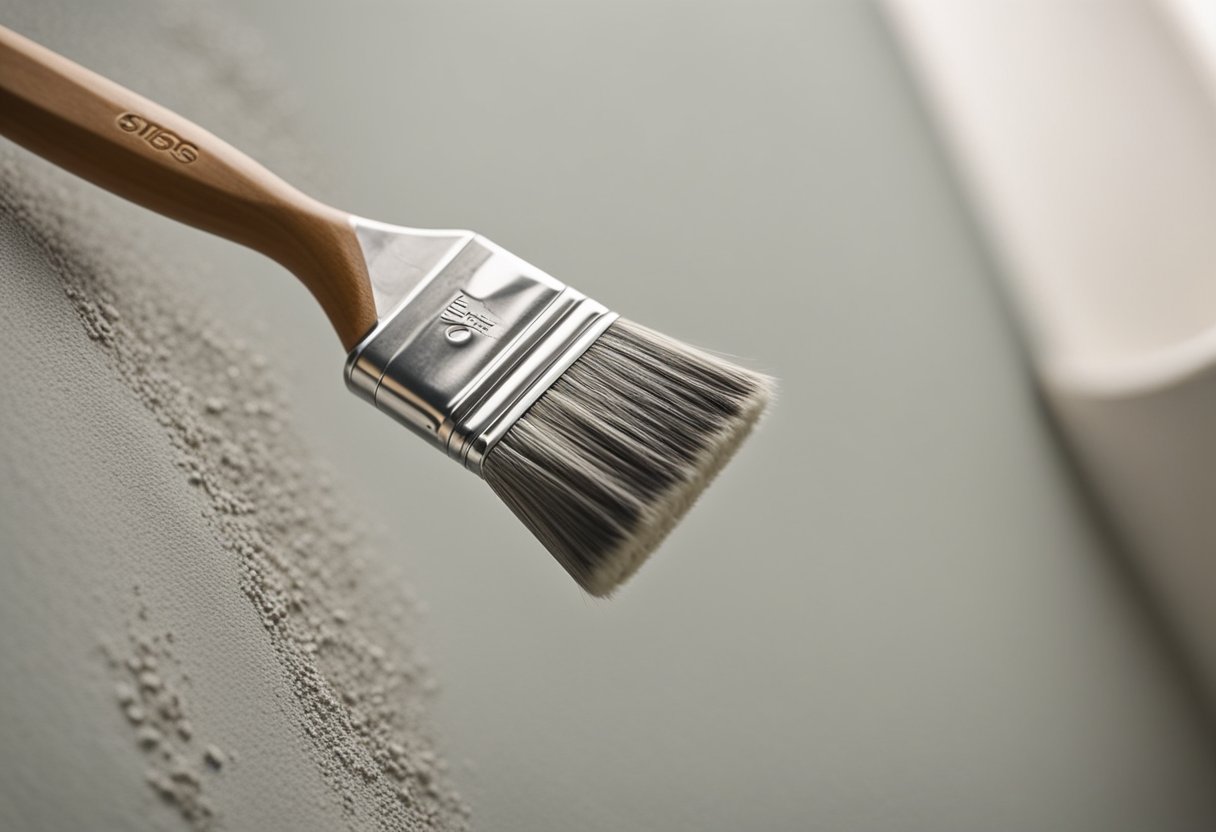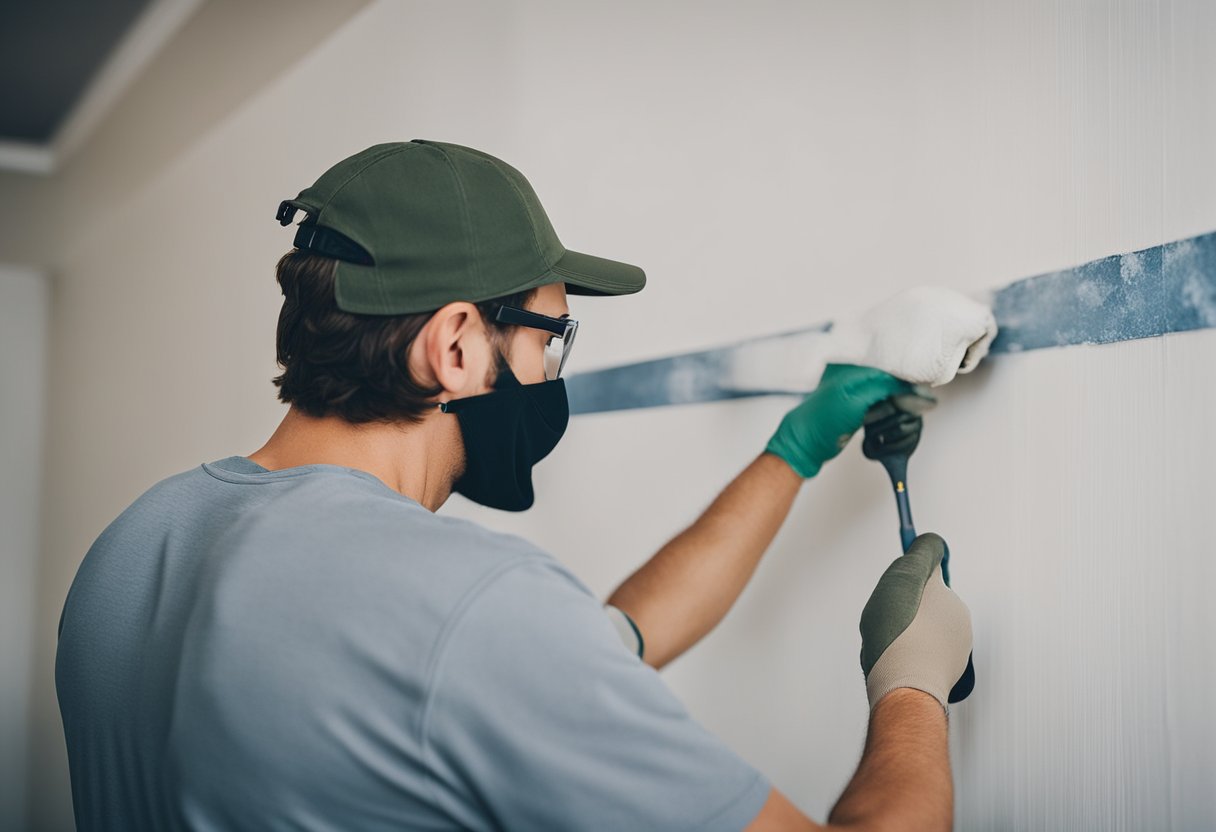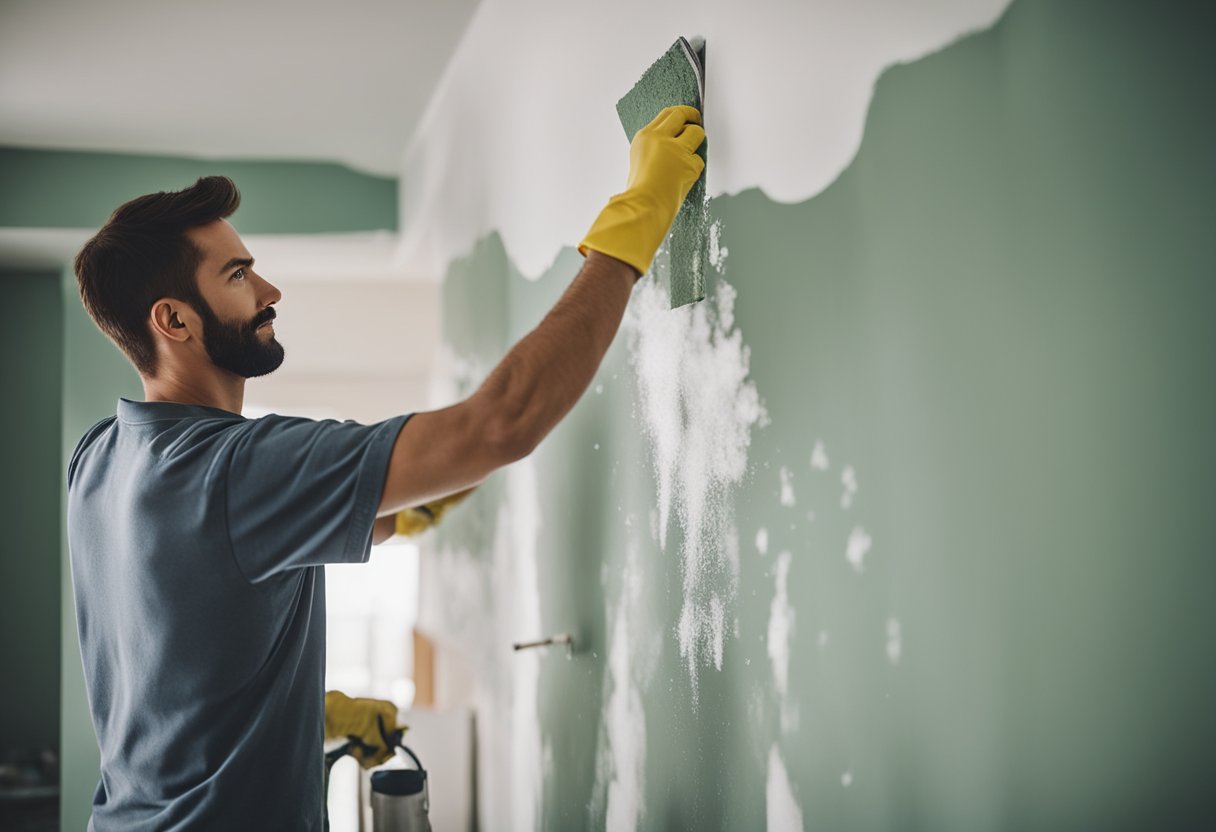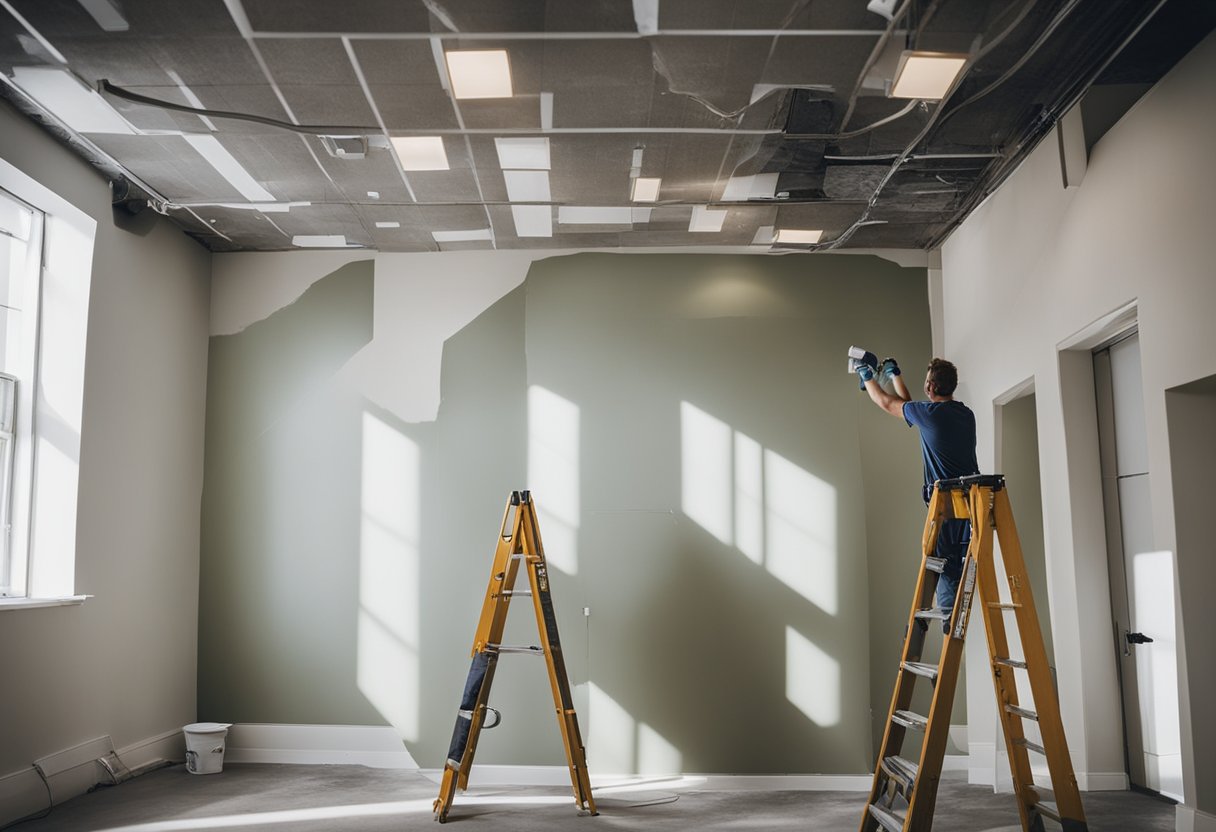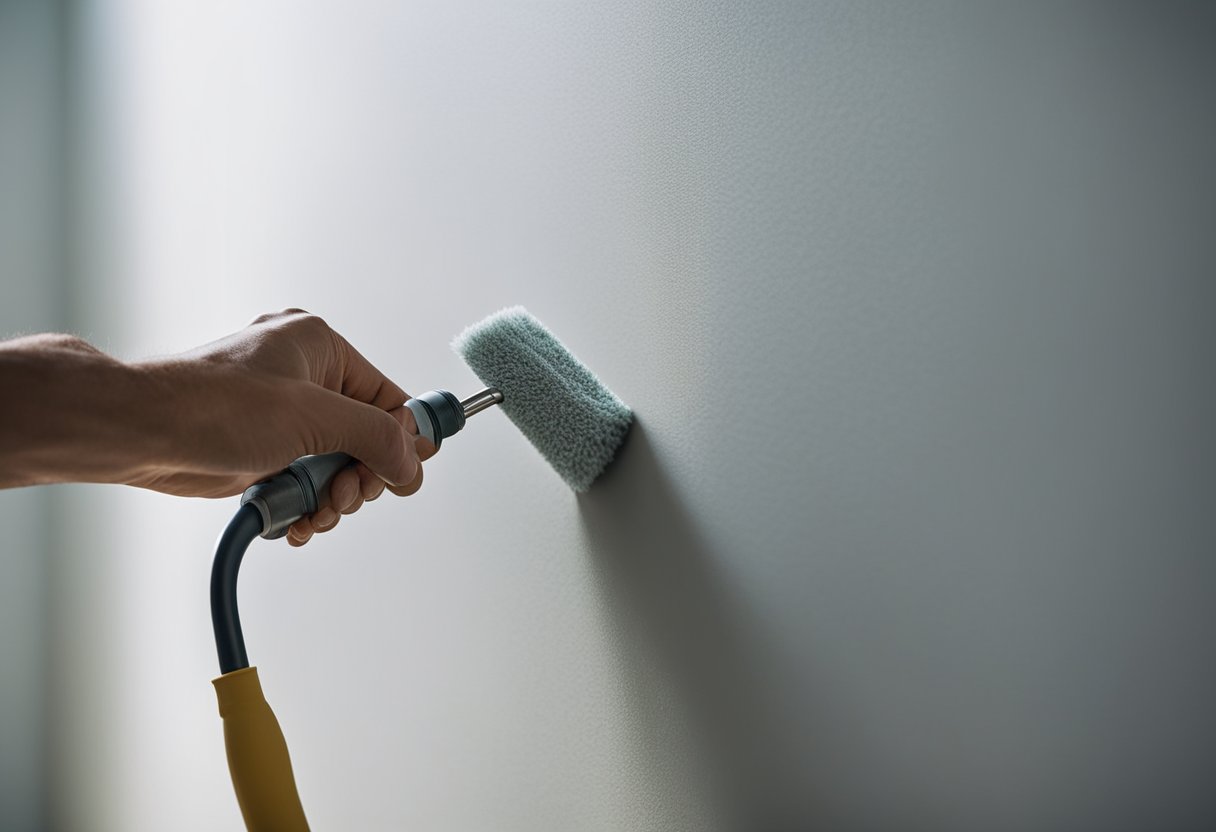Can you paint drywall without mudding? If you’re planning to paint your drywall, you might be wondering if you can skip the mudding process. Mudding is the process of applying joint compound to cover the seams between drywall sheets, creating a smooth surface for painting. While mudding is an essential step in painting drywall, some people may be hesitant to do it themselves or may want to save time and money by skipping the process. In this article, I will explore whether you can paint drywall without mudding and the challenges and techniques involved.
Understanding Drywall and Its Composition
Drywall, also known as gypsum board or plasterboard, is a common building material used to create interior walls and ceilings. It consists of a core of gypsum plaster sandwiched between two layers of paper. The paper facing provides a smooth surface that is easy to paint. However, the seams between drywall sheets must be covered to create a seamless surface for painting. This is where mudding comes in.
Why Mudding Is Important
Mudding is important because it creates a smooth surface for painting. Without mudding, the seams between drywall sheets would be visible, and the surface would be uneven, making it difficult to achieve a professional-looking paint job. Mudding also helps to hide imperfections and cracks in the drywall, creating a flawless finish.
Understanding Drywall and Its Composition
As a professional painter, I often get asked whether it is possible to paint drywall without mudding. Before answering this question, it is crucial to understand what drywall is and its composition.
Drywall, also known as gypsum board or plasterboard, is a construction material used to create walls and ceilings. It is made of gypsum, a soft mineral that is mined from natural deposits. The gypsum is then mixed with water and other additives to create a slurry that is poured onto a layer of paper or fiberglass. The slurry sets and hardens, creating a solid panel that can be cut to size and used for construction.
Drywall comes in different types, including standard, lightweight, and fire-resistant. Standard drywall is the most common type and is used for general construction purposes. Lightweight drywall is made by adding lightweight materials to the gypsum slurry, making it easier to handle and install. Fire-resistant drywall is treated with special chemicals that make it resistant to fire.
When it comes to painting drywall, it is essential to understand that the surface needs to be smooth and even. This is where mudding comes in. Mudding, also known as joint compound, is a material used to fill in the gaps between drywall panels, creating a smooth surface that is ready for painting. Without mudding, the surface of the drywall will be uneven and rough, which will lead to poor adhesion of the paint to the wall. Dust and dirt particles may also become embedded into the wall during painting without mud coating, acting as a barrier between the wall and its new coat of paint.
In conclusion, while it is technically possible to paint drywall without mudding, it is not recommended. Mudding is an essential step in the drywall installation process that ensures a smooth and even surface that is ready for painting.
Why Mudding Is Important
https://www.youtube.com/watch?v=S9KdiAx3S10&embed=true
As someone who has worked with drywall for years, I can confidently say that mudding is an essential step in the painting process. Mudding is the process of filling in gaps and seams in drywall with joint compound, also known as drywall mud, to create a smooth surface for painting.
Drywall seams can be unsightly and can ruin the look of a freshly painted wall. Without mudding, these seams will be visible and can even cause the paint to crack or peel over time. By using specialized topping mud and a putty knife, you can create a seamless finish that will give your walls a professional look.
When mudding drywall, it’s important to use the right materials. Paper drywall tape is often used for a smoother finish, but mesh drywall tape can be easier for someone who is inexperienced to use. Sealing drywall joints with drywall tape and mud is the very first step in the mudding process. Multiple coats of mud are then applied, followed by sanding after the final coat of mud.
Mudding drywall not only creates a smooth surface for painting, but it also protects in-wall elements, resists invasion from pests, and acts as a fire suppressant. It strengthens the overall structure of the wall and helps to prevent cracks and other damage.
In conclusion, mudding is an important step in the painting process that cannot be skipped. It creates a smooth surface for painting, protects in-wall elements, and strengthens the overall structure of the wall. By using the right materials and following the proper steps, you can achieve a professional look that will last for years to come.
Can Drywall Be Painted Without Mudding?
https://www.youtube.com/watch?v=w-xQ6SoFUhc&embed=true
As a professional painter, I often get asked if it is possible to paint drywall without mudding. The answer is yes, it is possible, but it is not recommended.
Drywall mud, also known as joint compound, is used to fill gaps between drywall sheets, cover screws, and create a smooth surface for painting. Skipping this step can result in a rough and uneven surface that does not hold paint well.
If you are in a situation where you cannot mud the drywall, such as when you are on a tight budget or tight schedule, there are a few alternatives to consider.
Using Flat Paint
One option is to use flat paint, which can help minimize the appearance of imperfections on the drywall surface. Flat paint has a matte finish that does not reflect light, making it less noticeable when there are bumps or unevenness on the wall. However, it is important to note that flat paint is not as durable as other types of paint and may not hold up well over time.
Using a Textured Paint
Another option is to use a textured paint, which can help hide imperfections on the drywall surface. Textured paint has additives that create a textured surface, which can help mask bumps and unevenness on the wall. However, it is important to note that textured paint is more difficult to apply and may require multiple coats to achieve the desired effect.
In conclusion, while it is possible to paint drywall without mudding, it is not recommended. Drywall mud is an essential step in creating a smooth and even surface for painting. However, if you cannot mud the drywall, using flat paint or textured paint can help minimize the appearance of imperfections on the wall.
Challenges of Painting Drywall Without Mudding
As a professional painter, I strongly recommend properly taping and mudding drywall joints before painting. However, some people may be tempted to skip this step due to lack of experience or time constraints. Painting drywall without mudding can lead to several challenges, such as:
Rough Texture and Poor Adhesion
Drywall without mudding often has a rough texture that provides weak adhesion for paint, leading to flaking or bubbling after drying. Also, dust and dirt particles may become embedded into the wall during painting without mud coating. They act as a barrier between the wall and its new coat of paint. This can result in an uneven and unattractive finish.
Uneven Surface and Imperfections
Painting drywall without mudding can also highlight any imperfections on the wall surface. Any unevenness, cracks, or other imperfections will be visible after painting, leading to an unsightly appearance. This can be especially problematic if you plan to use a glossy or semi-glossy paint finish, as it will amplify any flaws in the wall.
Moisture Damage, Pests, and Mold
Drywall without mudding is more prone to moisture damage, pests, and mold growth. Moisture can seep into the wall through any gaps or cracks, leading to mold and mildew growth that can cause health problems. Pests such as rodents and insects can also easily enter the wall through any gaps or cracks, leading to further damage.
Peeling and Cracking
Drywall without mudding is more prone to peeling and cracking due to its rough texture and lack of adhesion. Over time, the paint may start to peel and crack, leading to an unsightly appearance. This can be especially problematic in high-traffic areas or areas with high humidity levels.
In conclusion, while it may be tempting to skip the mudding step when painting drywall, it can lead to several challenges and problems. Properly taping and mudding drywall joints before painting is essential to achieving a smooth, even, and long-lasting finish.
Techniques for Painting Drywall Without Mudding
As a professional painter, I highly recommend using joint compound to mud your drywall before painting. However, there are a few techniques you can use to paint drywall without mudding if you are in a bind and cannot mud your drywall.
Prime Your Drywall
Before painting, it is important to prime your drywall. Priming helps to create a smooth surface and improves adhesion of the paint to the drywall. A primer acts as a base coat and helps to seal the drywall, which is especially important if you are painting over new drywall.
Texture Your Drywall
If your drywall has a rough surface, you can use a texture to hide any imperfections. You can use a canvas roller or a texture sprayer to apply texture to your drywall. Be sure to follow the manufacturer’s instructions when using a texture sprayer.
Hang a Blank Canvas
If you are unable to mud your drywall, you can hang a blank canvas over it. This will give you a smooth surface to paint on without having to mud the drywall. Be sure to use a canvas that is the same size as your drywall and secure it properly to the drywall.
Cut in Multiple Coats
When painting without mudding, it is important to cut in multiple coats. This means you will need to paint the edges of your drywall first, then paint the rest of the wall. This will help to create a smooth finish and hide any imperfections.
Skim Coat Your Drywall
If you have minor imperfections in your drywall, you can use a skim coat to smooth them out. A skim coat is a thin layer of joint compound that is applied over the drywall to create a smooth surface. Be sure to sand the skim coat before painting to create an even surface.
Overall, while it is possible to paint drywall without mudding, it is not recommended. Mudding your drywall before painting will give you a smooth surface and a professional finish. However, if you are in a bind and cannot mud your drywall, these techniques can help you achieve a smooth finish.
Safety and Building Code Considerations
As a professional painter, I always prioritize safety and building code requirements when working on a project. Painting drywall without mudding can pose several safety concerns and may not meet building code requirements.
When drywall joints are not properly taped and mudded, it can lead to gaps and uneven surfaces that can be a tripping hazard. This is especially dangerous in high-traffic areas such as hallways and staircases. Additionally, if the drywall is not properly sealed, it can lead to mold growth, which can pose a serious health risk.
Furthermore, building codes require that drywall be properly taped and mudded to meet fire resistance standards. Skipping this step can compromise the integrity of the drywall and put the building at risk in case of a fire.
In addition to safety concerns, painting drywall without mudding can also violate building codes related to wiring and plumbing. These systems are often installed behind drywall, and if the drywall is not properly sealed, it can lead to moisture damage and even electrical hazards.
In conclusion, while it may be tempting to skip the mudding step when painting drywall, it is important to prioritize safety and building code requirements. Properly taping and mudding drywall joints not only ensures a professional finish, but also protects the building and its occupants from potential hazards.
Alternative Wall Covering Options
When it comes to wall coverings, drywall is the most common option. However, if you are looking for an alternative to drywall, there are several options available. Here are some of the most popular alternative wall coverings:
Paneling
Paneling is a popular alternative to drywall. It comes in a variety of styles, including wood, vinyl, and fiberboard. Paneling can be installed directly over drywall or other surfaces. It is a great option for those who want a quick and easy wall covering solution.
Tile
Tile is another alternative to drywall. It is a popular option for bathrooms and kitchens because it is water-resistant and easy to clean. Tile comes in a variety of styles, including ceramic, porcelain, and glass. It can be installed directly over drywall or other surfaces.
Wallpapering
Wallpapering is a popular alternative to painting. It comes in a variety of styles and patterns, making it easy to customize your walls. Wallpaper can be installed directly over drywall or other surfaces. It is a great option for those who want to add some color and texture to their walls.
Wood Paneling
Wood paneling is a classic alternative to drywall. It comes in a variety of styles, including tongue and groove, shiplap, and beadboard. Wood paneling can be installed directly over drywall or other surfaces. It is a great option for those who want to add warmth and texture to their walls.
Wall Panels
Wall panels are another alternative to drywall. They come in a variety of materials, including wood, metal, and plastic. Wall panels can be installed directly over drywall or other surfaces. They are a great option for those who want a modern and sleek wall covering solution.
Crown Molding, Chair Rails, and Quarter Round
Crown molding, chair rails, and quarter round are all great options for adding some visual interest to your walls. They can be installed directly over drywall or other surfaces. Crown molding is a great option for adding some elegance to your walls, while chair rails and quarter round are great for adding some dimension.
Caulk
Caulk is a great option for filling in gaps and cracks in your walls. It can be used to seal around windows and doors, as well as to fill in gaps between trim and walls. Caulk comes in a variety of colors and can be painted over once it has dried.
Insulation
Insulation is a great option for those who want to improve the energy efficiency of their home. It can be installed directly over drywall or other surfaces. Insulation comes in a variety of materials, including fiberglass and foam.
Wainscoting
Wainscoting is a great option for adding some visual interest to your walls. It is a type of paneling that is installed on the lower half of the wall. Wainscoting can be made from a variety of materials, including wood and MDF. It is a great option for those who want to add some texture and dimension to their walls.
In conclusion, there are many alternative wall covering options available. Whether you choose paneling, tile, wallpapering, wood paneling, wall panels, crown molding, chair rails, quarter round, caulk, insulation, or wainscoting, there is a solution that will meet your needs.
Hiring Professionals for Drywall Installation and Painting
If you’re not confident in your drywall installation and painting skills, hiring a professional contractor could be the best option. Contractors have the necessary expertise and experience to ensure that the job is done correctly and efficiently. Additionally, they have access to the right tools and materials to get the job done quickly and with minimal mess.
When hiring a contractor for drywall installation and painting, it’s important to do your research and choose a reputable professional. Look for contractors with good reviews and ratings, and ask for references from past clients. You can also check with your local Better Business Bureau to see if any complaints have been filed against the contractor.
Home improvement stores may also offer installation and painting services. While these services may be more affordable than hiring a contractor, it’s important to ensure that the employees performing the work are experienced and qualified. Ask about their training and experience before agreeing to the service.
Overall, hiring a professional for drywall installation and painting can save you time and stress. It may also result in a higher quality finished product. However, it’s important to do your due diligence and choose a reputable contractor or service provider to ensure that the job is done correctly.
Frequently Asked Questions
Can drywall be painted without mudding?
Yes, drywall can be painted without mudding. However, it is not recommended as it can lead to poor adhesion of paint to the wall resulting in flaking or bubbling after drying. Dust and dirt particles may also become embedded into the wall during painting without mud coating, creating a barrier between the wall and its new coat of paint.
Is it necessary to mud drywall before painting?
It is recommended to mud drywall before painting. Mudding and taping drywall before painting seals any gaps between pieces of drywall and creates a smooth, seamless finish. It also ensures better protection against moisture damage, cracks, and other long-term issues.
What are some alternatives to mudding drywall?
There are several alternatives to mudding drywall. One option is to use crown molding, which can be installed where walls and an existing drywall ceiling meet. This is not only a beautiful element to have in your home, but it also hides any gaps or seams where pieces meet in your new drywall construction. Another option is to use quarter round to cover gaps between the wall and the floor or ceiling.
Can you paint directly on Sheetrock without mudding?
It is possible to paint directly on Sheetrock without mudding, but it is not recommended. Sheetrock without mudding often has a rough texture that provides weak adhesion for paint, leading to flaking or bubbling after drying. Also, dust and dirt particles may become embedded into the wall during painting without mud coating, creating a barrier between the wall and its new coat of paint.
Is it possible to finish drywall without mudding?
Yes, it is possible to finish drywall without mudding. One option is to use self-adhesive mesh tape to cover the joints between pieces of drywall. Another option is to use a drywall repair kit that includes a putty knife, spackle, and sandpaper.
What is the best way to paint drywall for the first time?
The best way to paint drywall for the first time is to start with a coat of primer. This will help the paint adhere better to the wall and provide a more even finish. It is also important to use high-quality paint and the right tools, such as a roller and brush, to ensure a professional-looking finish.

Hi, I’m Sal Muller of Tooltrip.com. My DIY experience led me to understand essential power tools for home projects. Tooltrip.com guides enthusiasts and professionals in choosing right tools for any job. I provide concise top tool reviews for easier, efficient DIY.

